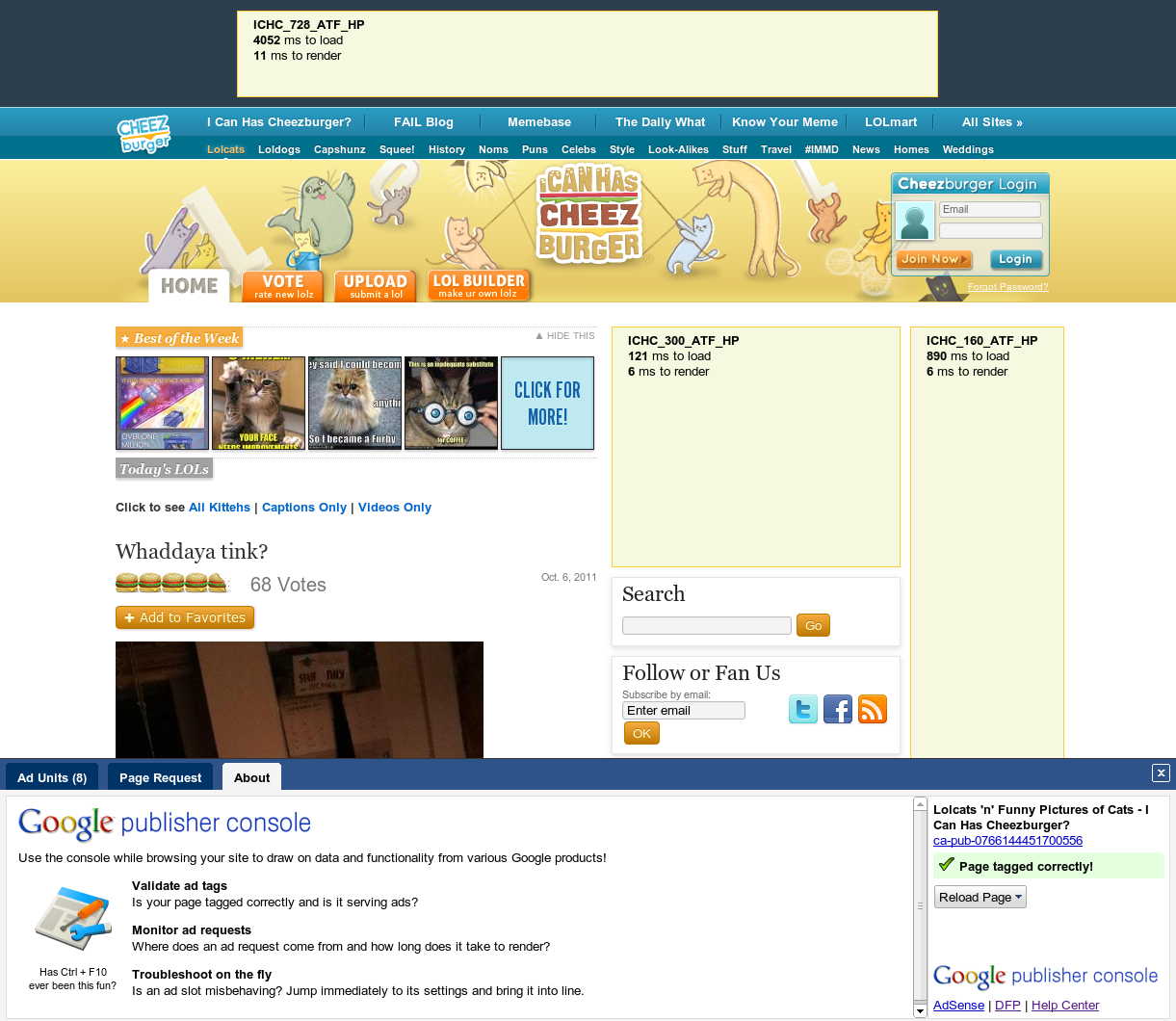Introducing the next generation of the DFP ad tag
October 25th, 2011 | Published in Google DoubleClick, Uncategorized
For websites that sell display advertising, the ad tag is the essential link between a publisher's ad server, such as DoubleClick for Publishers (DFP), and website content. An ad tag is a snippet of code that is inserted into the source code of a web page in order to display ads.
Properly implementing your ad tags is a vital piece of your ad operations since it directly affects your visitor's experience to your website and bottom-line. Tagging errors can prevent the correct ad from being displayed, or prevent ads from displaying altogether. Slow loading ads can also slow down the loading of content, resulting in long wait times for your site's visitors.
This is why we're so excited to introduce the next generation of the DFP ad tag: The Google Publisher Tag. The new tag provides publishers with several key benefits including:
Speed:
We've designed the new tags with speed in mind since we know that long load times can lead to a poor user experience and lost revenue opportunities. The new tags can deliver your ads asynchronously, meaning that your web page will render creatives as they are received from DFP so slow loading ads will not slow down your content.
Flexibility:
The Google Publisher Tag supports all formats and devices, simplifying ad delivery to your web, mobile, and video content. The tag also supports:
Efficiency:
If you've found yourself navigating through your website in efforts to get your ads to show with no success, the Google Publisher Console is here to help.

The Publisher Console can be used on any webpage you manage that contains the Google Publisher Tag, and allows you to easily view the real-time decision making process DFP uses to determine which ad to serve, the time DFP took to generate each ad, and information about missing or incorrect ad tags.
To take advantage of the new functionality introduced above, you will need to re-tag your pages using the new tag. If you're already using any of our older ad tagging formats, you won't be required to re-tag any of your pages to continue using DFP.
We're committed to providing ad tags that are easy for publishers to implement, and provide the best possible experience for end users.
Properly implementing your ad tags is a vital piece of your ad operations since it directly affects your visitor's experience to your website and bottom-line. Tagging errors can prevent the correct ad from being displayed, or prevent ads from displaying altogether. Slow loading ads can also slow down the loading of content, resulting in long wait times for your site's visitors.
This is why we're so excited to introduce the next generation of the DFP ad tag: The Google Publisher Tag. The new tag provides publishers with several key benefits including:
Speed:
We've designed the new tags with speed in mind since we know that long load times can lead to a poor user experience and lost revenue opportunities. The new tags can deliver your ads asynchronously, meaning that your web page will render creatives as they are received from DFP so slow loading ads will not slow down your content.
Flexibility:
The Google Publisher Tag supports all formats and devices, simplifying ad delivery to your web, mobile, and video content. The tag also supports:
- HTTPS Environments: Deliver ads into secure HTTPS environments.
- E-mail Ad Serving: Non-JavaScript tags available for use in email or other environments that don't support JavaScript rendering.
- Passbacks: Tag can be used in a third-party ad server.
- Asynchronous ad refresh: Refresh ads in environments that don't require page reloads.
- Single-Request Mode: Fetch and deliver all creatives simultaneously.
- Interstitial (out-of-page) creatives.
- Guaranteed roadblocks. Sign up for early access here.
Efficiency:
If you've found yourself navigating through your website in efforts to get your ads to show with no success, the Google Publisher Console is here to help.
The Publisher Console can be used on any webpage you manage that contains the Google Publisher Tag, and allows you to easily view the real-time decision making process DFP uses to determine which ad to serve, the time DFP took to generate each ad, and information about missing or incorrect ad tags.
To take advantage of the new functionality introduced above, you will need to re-tag your pages using the new tag. If you're already using any of our older ad tagging formats, you won't be required to re-tag any of your pages to continue using DFP.
We're committed to providing ad tags that are easy for publishers to implement, and provide the best possible experience for end users.